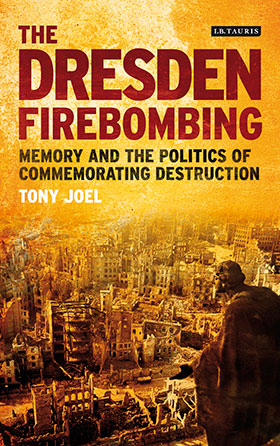New book examines the Bombing of Dresden – a tale of imperialist aggression, reconciliation or a war crime?
Media releaseIt is unusual for war historians to see history being played out before their eyes, but for Deakin University's Dr Tony Joel, the story of the allied bombing of Dresden is still to reach its final conclusion 69 years later.
"The key thing with all history, and memory studies, is that it is open to interpretation and debate," he said. "And with Dresden we see this - the interpretation is dependent on the agenda at the time as well as the agents at the time.
"If governments are involved the story will come 'from above,' whereas if people are involved it is very dependent on how they, the public, wish to remember the past."
In a new book, The Dresden Firebombing: Memory and the Politics of commemorating Destruction, to be launched on Thursday, April 2, Dr Joel tracks the way the story around the bombing of Dresden has been written, rewritten and appropriated since 1945. The book uses the public commemoration of the city's wartime destruction as a case study to explore the contentious notion of Germans as victims.
"Dresden was Germany's most internationally renowned city of art and high culture or Kulturstadt," he said.
"Its reputation for artistic opulence and architectural grandeur was so pervasive that it looked like it would withstand five years of total war and Nazi barbarism."
Dr Joel said on 13-14 February 1945, over 1000 aircraft operating in three waves dropped approximately 2,000 tons of high explosives and around 1,500 tons of incendiaries onto Dresden over 15 hours - culminating in arguably the single most devastatingly effective raid of the European bombing war.
"The Dresden raid has become one of the most controversial episodes of the war, mainly because of its large death toll as well as prompting questions as to why the city was targeted so late in the war.
"The war was nearly over yet the raid targeted the cultural centre of the hitherto intact city, not the industrial surrounds which would normally be expected to be a focus of military action."
Dr Joel said once the war ended Dresden was portrayed as a victim or sacrifice of the war.
"Dresden is in eastern Germany and as such fell into Soviet hands," Dr Joel said.
"As it was the Western Allies who destroyed the city, it became an effective propaganda tool of western capitalist and imperialist aggression for the communists during the Cold War.
"This narrative was used for decades.
"When East and West Germany were reunified in 1989/90, however, the theme of reconciliation emerged."
Dr Joel said this new theme drew on a more distant assessment of the war.
"There was acknowledgement that the German population had suffered during the war as much as populations in other European countries, and although they fought a just war the Western Allies didn't necessarily conduct their war cleanly, either," he said.
"In the 1990s the focal point for this new theme of reconciliation became the rebuilding of the ruined Church of Our Lady or Frauenkirche, a German project that received significant British support," he said.
"The church wasn't reconsecrated until 2005 but by then theme had shifted.
"Remembering the destruction of Dresden has become increasingly contested terrain as the Berlin Republic has witnessed a resurgent victim culture or Opferkultur concerned with remembering war-related loss and suffering inflicted upon, rather than caused by, Germans.
"Neo-Nazis and other disaffected rightists use the city's destruction as a way to negate German responsibility for war crimes, as if the rubble of Dresden somehow atoned for the gas chambers of Auschwitz-Birkenau.
"By 2004, neo-Nazis were even publicly defining Dresden as a 'Bombing Holocaust.'"
Dr Joel said that, for the past decade, around the anniversary of the raid in mid-February large crowds of neo-Nazi demonstrators have converged on the city and (mis)appropriated the memory of its wartime immolation for contemporary political ends.
"In equally large numbers leftists and anarchists also travel to Dresden in order to counter-demonstrate against the neo-Nazis," he said.
"Locals, understandably given their city's history, yearn for peace and in a witty play-on-words openly declare in candlelit messages each February 13th that Dresden is 'fed up with Nazis!' (Diese Stadt hat Nazis satt!)
"For more than 200 years Dresden was celebrated worldwide as Germany's leading city of art and high culture.
"For how long will it continue to be commemorated through its current rubric of victimisation and sacrifice?"
Share this story
 null
null
